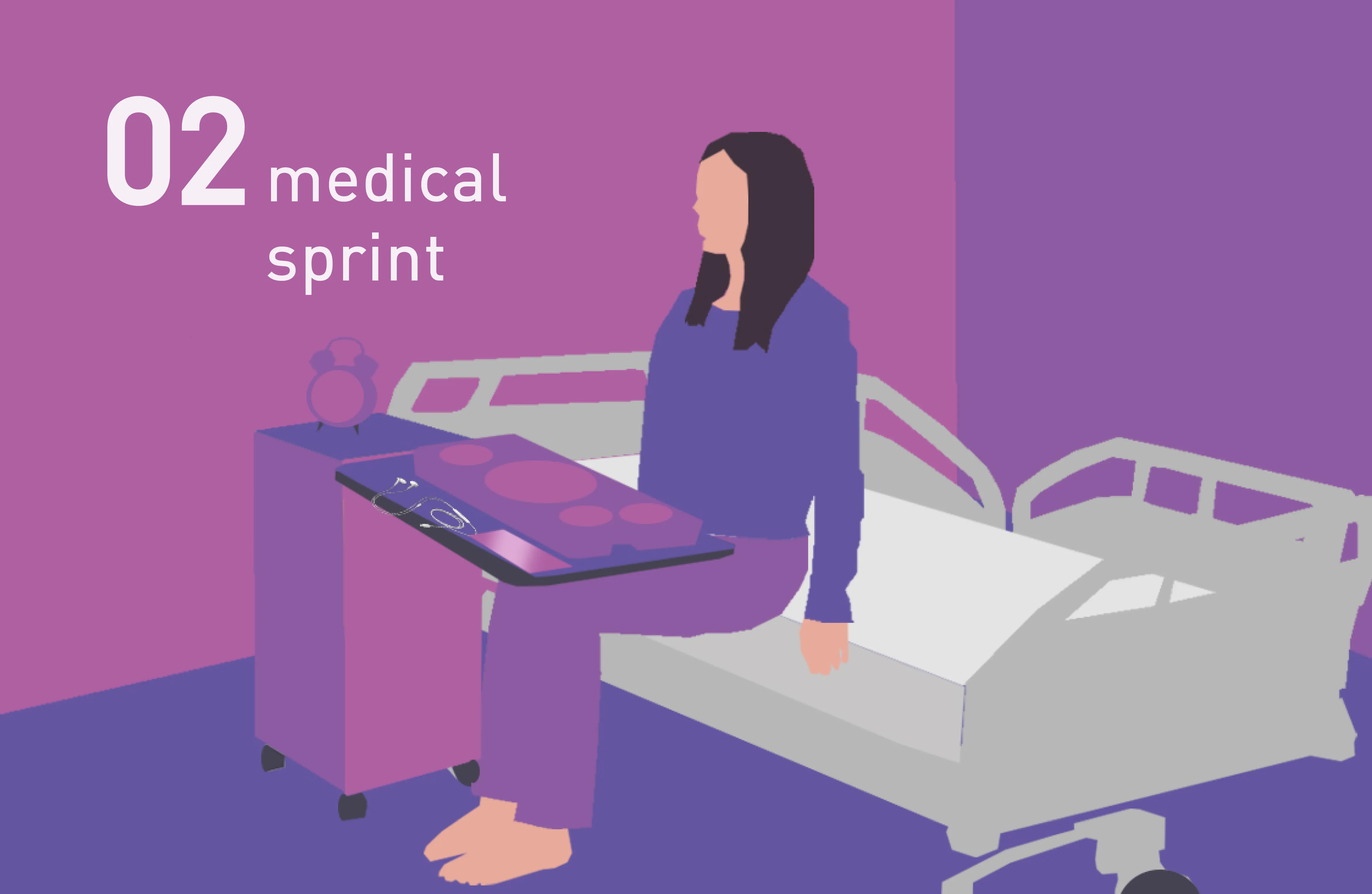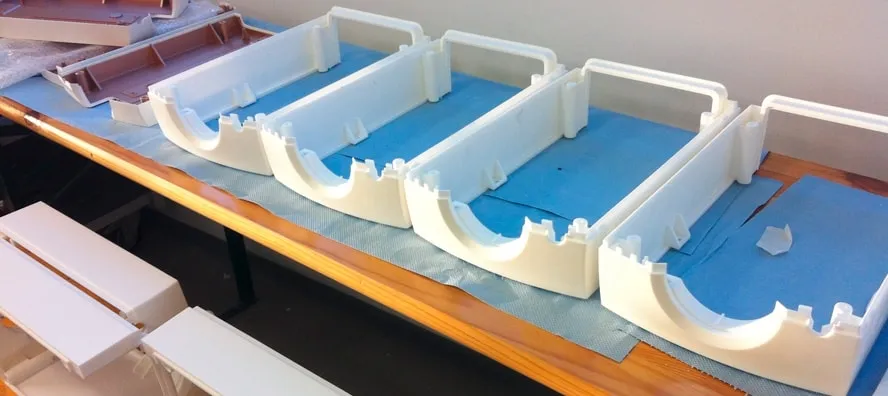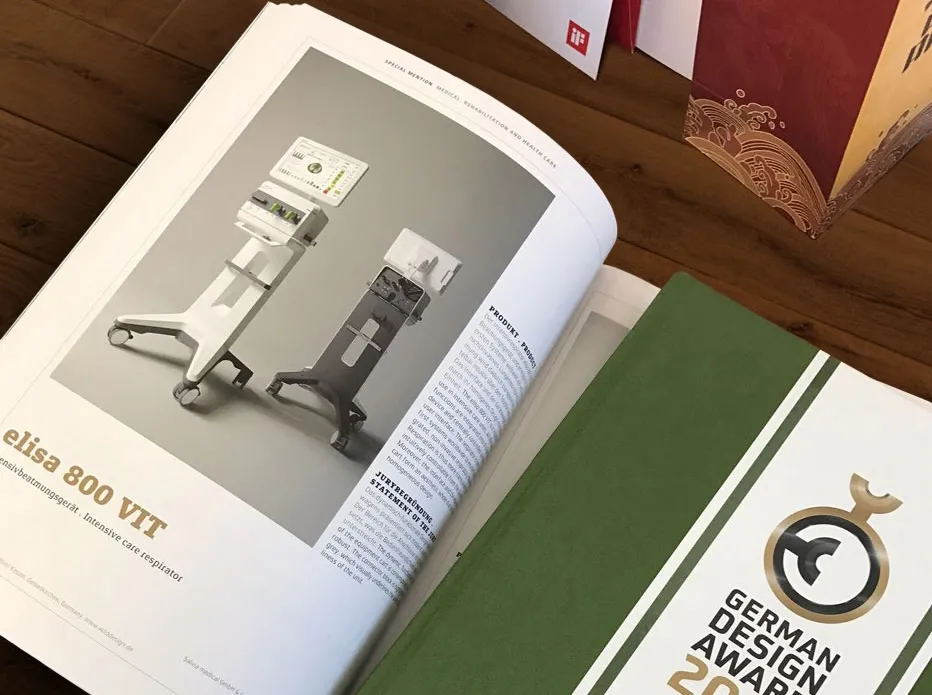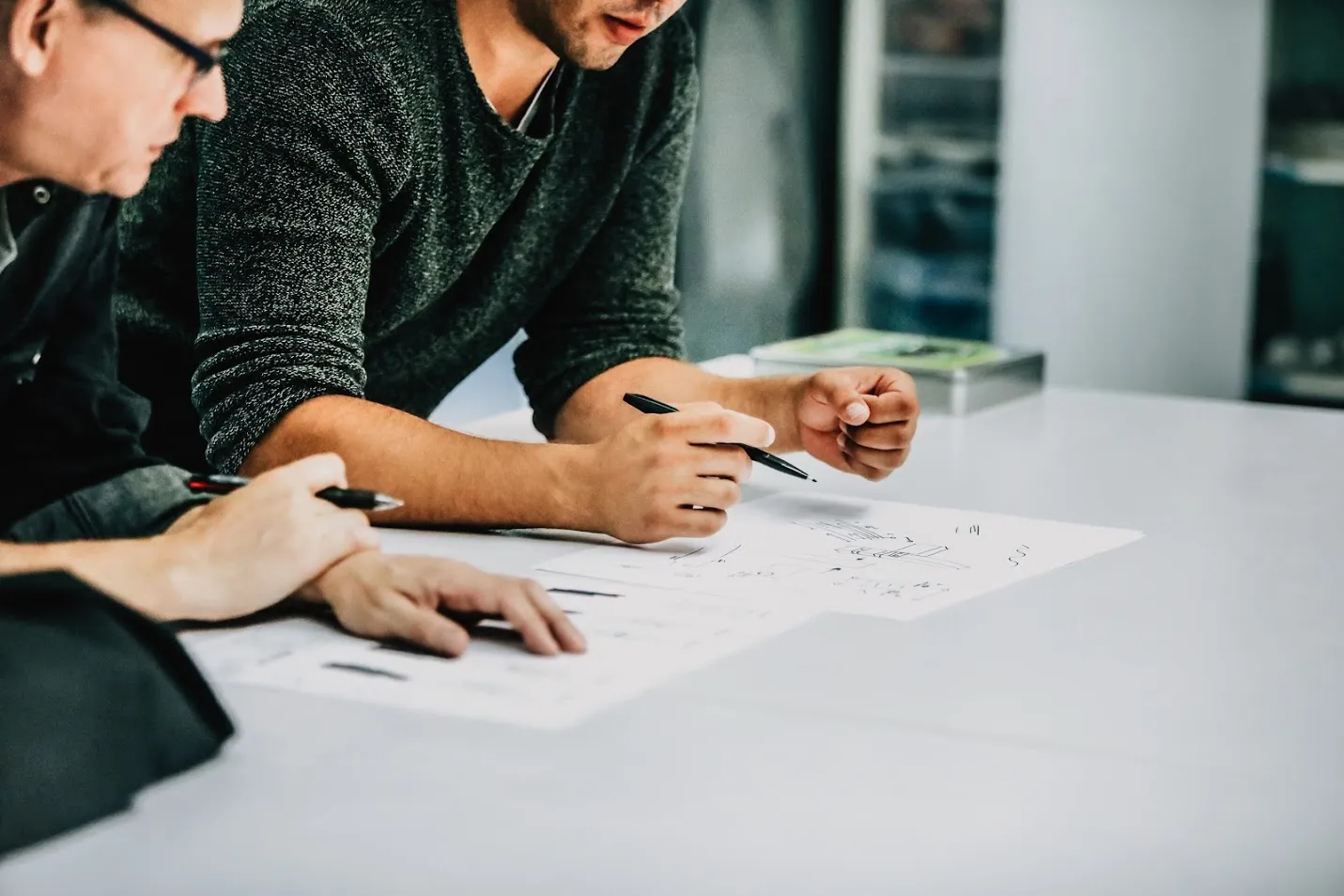Perspective
ARCO Inpatient care table of the future | Design Sprint 2
Why should we only tackle important topics when we are commissioned to do so? This is why we created our thought leader projects. Part 1 was already launched last year with the topic of in-ear wearables.
What is it all about?
As designers, we deal with a wide variety of issues. Which technologies will shape the future? What needs will play a role? What problems will we face? How will technology and digitalization change the medical sector?
In order to find answers and identify the right questions, our interns deal with precisely these during their time here at Wilddesign.
Our new series of articles will gradually present some of this work: The second mastermind project is about design student Ana Kahl Bulnes' medical design project ARCO - a concept that looks at the future of hospital beds and the environment that is so important for patients.

Understanding the needs of patients in everyday hospital life
The idea of the project was to make everyday life easier and more pleasant for inpatients in hospital and thus improve their quality of life during their stay. Ana chose the nursing table as the object to be examined more closely.
The first step in developing the concept was to analyze the patients' everyday hospital life. What does their daily routine look like, what are their needs and how do they cope with the rather monotonous daily routine? The analysis revealed that there are different usage scenarios for a care table and that the current product solutions take little or no account of these. It was also noticed that the usage scenarios have changed over the last few years with digitalization. This is an exciting field, which also prompted Ana to take a closer look at this topic and formulate a suitable solution.
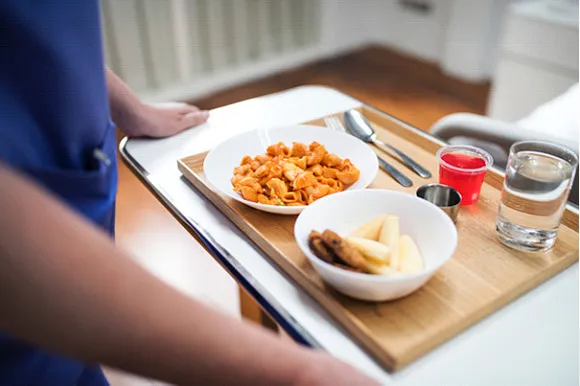
Which core requirements need to be solved?
In addition to everyday routines, such as eating meals, nursing procedures and ward rounds, the time in between is crucial for patients. In our modern, fully digitalized world, the use of technical devices such as smartphones, laptops or tablets also plays a crucial role during a stay in hospital, but how is the problem of power supply solved and what requirements are placed on the environment?
Other aspects concerned the storage of personal belongings, hygiene and waste disposal. As patients usually have limited mobility, accessibility and logistics are the biggest challenges here.
From her intensive research, Ana came up with the following requirements for a care table for everyday hospital use:
- Functional, mobile and easy to position
- Must contribute to better hygiene. Should be made of materials that are easy to clean.
- Good accessibility to sockets and stored items.
- Sufficient space and a high level of user comfort. This includes storage space for electronic devices, technical interfaces, storage space for bottles and an integrated waste garbage can.
- Should be aesthetically pleasing and tidy, because the nursing table embodies the "temporary living room" for the patient.
Concept designs: Adaptive design is convincing
Based on these requirements, Ana then set about creating various concepts. Four options emerged:
- The independent concept in which the care table stands on its own base and can be moved freely around the room on castors.
- The adaptive concept, in which the care table is mounted in a suitable position on the bed.
- The furniture concept, a movable cabinet with the option of making the table disappear completely into it.
- The fixed concept: The table also stands on a base, but without the option of moving it.
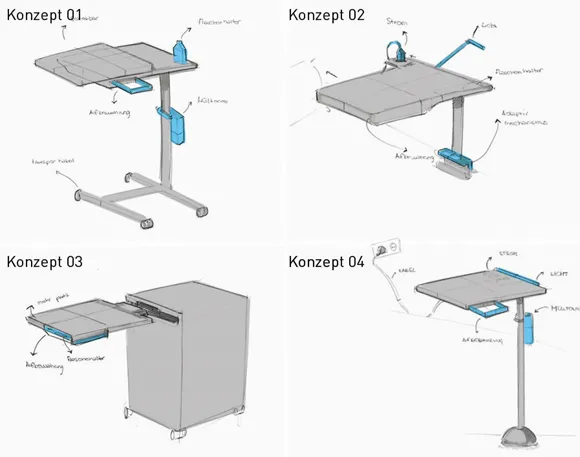
The adaptive concept 02 ultimately prevailed, as it comprehensively meets the requirements. Thanks to the adaptive mechanism, it can be moved flexibly - both in terms of height and lateral positioning. The distance to the patient can also be individually adjusted. Light and power connections can be integrated.

Ana looked at different manufacturers and their models to find the optimal positioning on the bed. This resulted in three concepts: The adaptive mechanism can either run on rails, be extendable or be plugged together.

The details
Above all, the design details needed to be self-explanatory, simple and precise. In terms of dimensions, a surface area of 65 cm x 38 cm turned out to be ideal. The table is foldable, height-adjustable thanks to a telescopic mechanism and is made of lightweight TSG (thermal foam casting) material.

To ensure functionality, all joints have a large degree of freedom, are space-saving and guarantee the greatest possible accessibility. The table can be folded both upwards and downwards. It also has a handle to make positioning easier and is conveniently electrically height-adjustable using a lever.


The care table also has additional modules that provide sufficient storage space for personal items and technical interfaces such as several USB ports and sockets, which are also easily accessible from the bed. The light is located on a flat arm that can be folded in next to the table. When folded out, the lamp is located directly above the table and can be operated and adjusted using sensor buttons on the top of the arm.

The ARCO concept therefore comprehensively addresses the needs of patients and thus ensures a more comfortable everyday life in hospital. Thanks to its flexible adjustability, it can be individually positioned for any purpose and also offers additional ease of use thanks to lighting and power options. With its integrated waste garbage can and easy-care material, it reduces germs and bacteria and contributes to hygiene.
Congratulations Ana on this good mastermind achievement.
If you like this concept or aspects of it, or if you think we should work on it further, please let us know. We look forward to receiving your feedback at vordenker-projekte@wilddesign.de
Frequently asked questions

